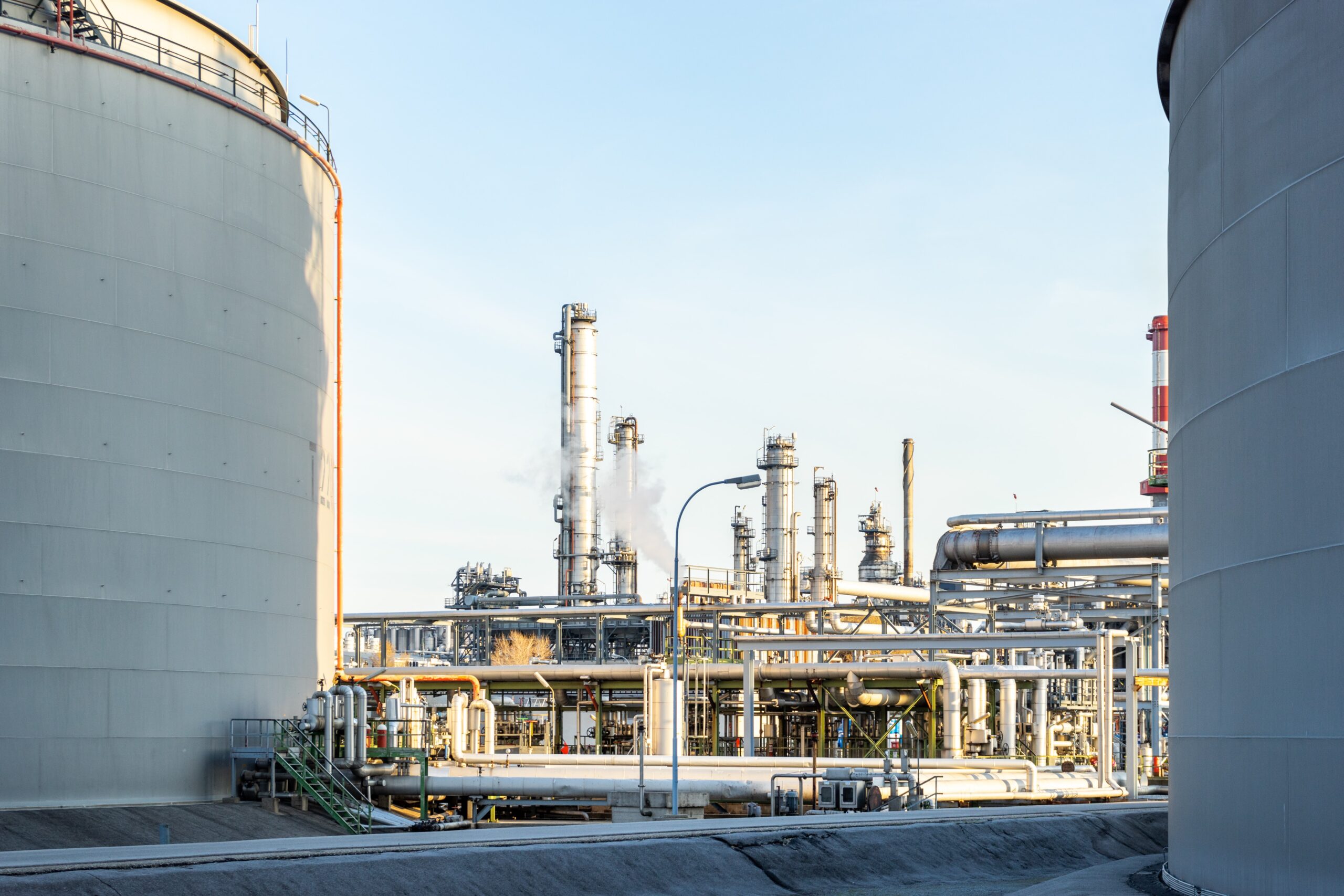All information in the datasheets is also available in ESDL (Energy System Description Language). You can find them in the Energy Data Repository (EDR).
Retrofit of post-combustion CO₂ capture for refineries using MEA solvents
There are a variety of techniques for post-combustion carbon capture that can be applied to flue gases; this factsheet considers chemical absorption with monoethanolamine (MEA) solvents.
Post-combustion capture does not require any major modifications to the refining process; MEA amine stripping technology is an end-of-pipe technology added to the plant to capture CO2 from existing flue gas streams. The modifications required for CO2 capture are cleaner flue gas (dust filters, NOx removal, additional desulphurisation equipment, etc.); a CO2 capture unit (absorber and stripper columns, heat exchangers, condensers, and a reboiler); and a CO2 compression and dehydration unit. However, the design of the site plays an important role in the cost and feasibility of implementing post-combustion CO2 capture. There are many different flue gas streams on a typical refinery site, and how they are combined in different stacks can vary. Thus the CO2 concentration and flue gas volume per stack will vary in each site as well. As the capture process requires electricity (notably for compression) and steam (mainly for solvent recovery), additional investments are also required to expand the site’s utilities. Many refineries have significant excess heat availability, which could reduce the cost and additional energy demand, but the potential to use that heat depends largely on site design and site-specific constraints, so has not been considered in this factsheet. This factsheet is based on literature looking both at hypothetical refinery site configurations and at specific sites.
The cleaned flue gas enters the absorber and is brought into contact with the MEA amine solution. About 90% of the CO2 is absorbed into the amine solution (now together referred to as a rich loading solution), and is then pumped to the stripper. In the stripper column, the rich loading solvent is heated with steam from the reboiler (which uses a heat exchanger to transfer heat from external steam to a heat transfer fluid), breaking the chemical bonds between the amine solvent and the CO2, and causing it to release its CO2, creating a relatively pure CO2 stream. The remaining solution (called a lean loading solution), now at a temperature of about 120 °C, is pumped back to the absorber to begin the cycle again, first passing through a heat exchanger to preheat the rich loading solution. The CO2 continues to the compressor, which compresses the gas for transport and storage. Pressure in the CO2 pipeline can vary significantly (both liquid and gaseous transport is possible) and has an important impact on total investment cost, operating cost and electricity use. This factsheet considers transport at about 110 bar/11 MPa to 140 bar/14 MPa.
While the MEA solvent capture technique is can also be applied to flue gases from power plants, there are two major differences when considering a refinery applications. First, the installations require combination of multiple flue gas streams (from various processes and utilities), which leads to higher equipment costs per unit of captured CO2. Second, the final concentration of CO2
in the flue gases is higher than those of a typical gas-fired power plant (here the refinery concentration is assumed to be around 9%vol, though this is highly dependent on the configuration, where a typical gas-fired power plant may have a concentration in the range of 5-10%vol).
Post-combustion carbon capture can be either retrofitted or designed in a greenfield refinery; this factsheet considers a retrofit to an existing refinery. Integrated design could lead to lower costs or higher efficiency.
Refinery configurations in the Netherlands vary widely. Key flue gas streams come from utilities (boilers and/or CHPs), steam methane reformers (SMR), fluid catalytic crackers (FCC), distillation processes (atmospheric and/or vacuum). Not all processes are present at all refineries, and thus their shares in the total CO2
emissions of the refinery also vary. Capture from the SMR unit of a refinery can also be considered separately; capture of CO2 from an SMR only is covered by other factsheets.
This factsheet considers several configurations, with capture of CO2 from flue gases from utilities, SMR, FCC, and distillation processes or some subset of those processes. The assumed CO2 concentration in these flue gases is about: utilities ~8%vol, SMR ~24%vol, FCC ~17%vol, atmospheric/vacuum distillation ~11%vol. The average concentration of the flue gas entering the capture unit for these configurations ranges from 6.7%vol to 13.1%vol, with an average of about 9%vol. At lower concentrations, the cost per tonne of captured CO2 rises. The power plant flue gases have slightly lower concentrations than the other sources shown here but typically account for the largest single source of CO2 emissions at a refinery, and therefore are often included in studies of CO2 capture at refineries. (Roussanaly et al., 2017; Ho et al., 2011; Leeson et al., 2014). Furthermore, an average MEA loss of 2 kton/ Mton CO2 is assumed. Based on different cases, losses of MEA may increase due to thermal, oxidative degradation or larger presence of contaminants such as SOx and NOx. These consideration are case specific and left out of scope.
Downloads
Download hier de datasheet (PDF)